Damage Evolution Analysis in a “Spaghetti” Bridge Model Using the Acoustic Emission Technique
Abstract
1. Introduction
2. Theoretical Foundations
2.1. Acoustic Emission Technique
- (a)
- Relation between the number of events N and the signal amplitude A: this relation has been long used in seismological applications, as illustrated by the classic Gutenberg & Ritcher law [4], which is of universal nature and it does not depend on the scale of the distribution [11,15,16]:where N is the cumulative number of signals and A is the signal amplitude. The physical meaning is discussed in [17,18,19]. It is hypothetically related, according to the expression , to the fractal dimension of the material domain from which the signals that are generated by cracks are emitted. When the damage process begins within a structure, signals are emitted from a micro-cracks roughly evenly distributed in the material volume, i.e., and . Thus, according to Equation (1), most events produce small-amplitude signals. As damage advances, localization effects take place, and the signals are preferentially emitted from micro-cracks that distribute on preferential surfaces, which results in macro-crack nucleation. Therefore, in this last phase, the values for and b become 2 and 1, respectively, and the application of Equation (1) yields an increase in the number of large-amplitude events. Thus, the evaluation of b and how it changes with time allows for one to keep track of damage processes.The procedure for computing b is schematically described in Figure 3a. The amplitudes due to each signals are collected and organized in a histogram. Subsequently, a bi-log diagram is built to illustrate the cumulative number N of signals with amplitude . Finally, b is the angular coefficient of the fitting line. For a more detailed discussion about this computing procedure, see [20].
- (b)
- Relation between N and the signal energy emission : the energy that is carried in the signal is also related to N in a form similar to that of the amplitude A, using a fitting coefficient analogous to b:The calculation of is analogous to the one described for b in case (a). It is also described in Figure 3a. Because the emitted AE signal energy is proportional to the squared maximum amplitude (), it is apparent that the expected interval for b [1.0, 1.5] translates to [0.5, 0.75] for , as discussed in [2] and shown by numerical simulation in [21]. One can also compute the energy emission from the area under the signal envelope, as also indicated in Figure 3b. This approach, referred to here as the RILEM method, was proposed in [13,22]. Finally, it is also possible to calculate energy emission from the Root Mean Square of the signal.
- (c)
- Relation between N and the characteristic signal frequency : this parameter was introduced by the same research team involved in this work as a reliable indicator for avalanches during a damage process [23]. This newly introduced coefficient c is also obtained by analogous means to those that are given for Equations (1) and (2), but focusing on the frequency distribution of the AE signals, i.e.,:where N is the cumulative number of signals with frequencies greater or equal to . The value of c can be similarly calculated to that used for b, as indicated in Figure 3c: it is the slope line of the signals distribution during the damage process as a function of the frequency that characterizes the signals. As in the case of the b-value for amplitudes, the c-value indicates changes in the damage process and the imminence of collapse by keeping track of the acquired AE signals’ frequencies. For instance, if the number of events with lower characteristic frequencies increases as compared to the higher ones, a change in the damage process has occurred.Still, regarding Figure 3c, note that there are two ways to calculate the characteristic frequency of the AE signal. The first is taking the ratio between the number of cycles np and the signal time interval (), as proposed by the RILEM [22] and referred to here as RILEM frequency. An alternative definition is by determining the spectral distribution of the AE signal and taking the frequency with the highest peak, i.e., the FFT method.
- (d)
- Frequency fluctuations during the damage process: a well-known measure of energy fluctuations in AE signals relies on their dependence on signal frequency, as described by the spectral density function (SDF), as mentioned by [24]. The first observations regarding this dependence are reported by [25], who coined the term -noise or Flicker Noise when studying the noise effects in electronic circuits. According to [26], the dependence of noise energy distribution with respect to frequency is given by:where is the energy emission, f is the signal frequency, while and a are the scalar fitting coefficients. Taking the logarithm of both sides in Equation (4), the best fitting line leads to a linear law, where gamma is the angular coefficient. Its calculation is schematically described in Figure 4.
2.2. Bundle Model
3. Application: The Bridge Model Analysis
4. Results
4.1. Evolution of Coefficients b, , c
4.2. Frequency Fluctuations during the Damage Process
4.3. Comparison with the Bundle Model
- The experimental results agree with the general shape predicted by the model, with a central part tending to a linear curve in the bi-log graph. This evidences that the damage process tends to occur according to an exponential function, but its characteristic exponent is different. The data are also consistent with the theoretically expected deviations towards both magnitude extremes.
- Reducing the sample size for drawing the distribution does not affect AE-events distribution only at the magnitude extremes: when only the first 50% of the data are used, the intermediate linear range reduces in amplitude, and the angular coefficient is also affected.
- The results that are presented here suggest that the damage process occurs according to a general pattern that is similar to the one predicted by the Bundle Model. However, this tendency suffers in varying degrees from the effects of measurement noise, the structure’s external geometry, the boundary conditions applied to it, and the internal organization of the system’s elements. The influence that is exerted by these factors is illustrated schematically in Figure 16. The two extreme cases correspond to the predictions given by the Bundle Model when all fibers are aligned in parallel (a) or almost entirely in series (f), whereas cases (b)–(e) represent several combinations of geometry and externally applied loads, which appear as intermediate arrangements within the context of the model. Thus, the spaghetti bridge configuration studied here is closer to the quasi-serial Bundle Model (case (f)), which is more prone to localization effects than the other cases. Finally, all profiles tend to a “platea” for small-amplitude events due to the need to apply a threshold value for negating measurement noise effects.
- (a)
- (b)
- (c)
- In [47], a comparative analysis is made between a prismatic specimen under uniaxial compression and a pre-fissured beam under flexion on three points. Both of the structures were made from concrete, and the comparison was carried out by both numeric and experimental means. The results are summarized in Figure 18, making it clear that geometry and boundary conditions significantly influence structural behavior. For instance, the histogram for the beam tends to horizontal for small magnitudes, because new ruptures tend to occur at the extremities of the pre-fissures, favoring the localization of avalanches and connection between events. As for the prismatic specimen, ruptures are equally likely to appear at every part of its structure in the initial phases, with localization only occurring for advanced stages of the damage process.
5. Conclusions
- The evolution of the coefficients b, , and c through time are suitable measures of the local instability that are associated with changes in the AE regime, with c (related with the event frequency distribution) being the most sensitive of the three.
- Computing from the RMS-value of the AE signal yields improved sensitivity when compared to the traditional RILEM method.
- Analysis of frequency changes (variations in c and coefficients) are useful not only for considering the isolated AE signals, but also the complete information collected by the AE sensors. In particular, the coefficient presented a sharp reduction shortly before the localized damage became evident during the load test, which reinforces this coefficient’s usefulness as a failure predictor.
- The minimum values for coefficients c and are consistent with the observations by Wilson [6] on the tendency of all phenomenon scales to participate when an instability occurs.
- When compared to the Bundle Model’s theoretical predictions, the experimental results presented here highlight the influence of boundary conditions, geometry, and internal organization on the collapse pattern of structures.
Author Contributions
Funding
Acknowledgments
Conflicts of Interest
Abbreviations
| AE | Acoustic Emission |
| CNAAA | Central Nuclear Almirante Álvaro Alberto |
| ELS | Equal Load Shared |
| FFT | Fast Fourier Transform |
| UFRGS | Universidade Federal do Rio Grande do Sul |
| (Federal University of Rio Grande do Sul) | |
| RILEM | International Union of Laboratories and Experts in Construction |
| Materials, Systems and Structures | |
| RMS | Root Mean Square |
| SDF | Spectral Density Function |
Nomenclature
| Exponencial coefficient of the cumulative number of events (N) vs. energy signal magnitude | |
| A | Amplitude signal |
| Amplitude of the record register by the divice during the time | |
| Maximum Amplitude of the signal | |
| Thresold | |
| b | Exponencial coefficient of the cumulative number of events (N) vs. signal magnitudes (A) |
| c | Exponencial coefficient of the accumulated number of events (N) vs. characteristic signal frequency |
| Signal Energy | |
| Characteristic Signal frequency | |
| N | Cumulative number of events |
| Rise Angle | |
| Rise Time | |
| t | Time |
| Final time | |
| Initial time | |
| Instant of the signal maximum amplitude | |
| u | Displacement |
References
- Krajcinovic, D. Damage Mechanics; North-Holland series. In Applied Mathematic and Mechanics; Elsevier: New York, NY, USA; Amsterdam, The Netherlands, 1996; ISBN 978-0-444-82349-6. [Google Scholar]
- Biswas, S.; Ray, P.; Chakrabarti, B.K. Statistical Physics of Fracture, Breakdown, and Earthquake: Effects of Disorder and Heterogeneity; John Wiley & Sons: Weinheim, Germany, 2015; ISBN 978-3-527-41219-8. [Google Scholar]
- Gao, H. A Theory of Local Limiting Speed in Dynamic Fracture. J. Mech. Phys. Solids 1996, 44, 1453–1474. [Google Scholar] [CrossRef]
- Richter, C.F. Elementary Seismology; W. H. Freeman and Company and Bailey Bros. & Swinfen Ltd.: London, UK, 1958; Volume 2. [Google Scholar]
- Turcotte, D.L.; Newman, W.I.; Shcherbakov, R. Micro and Macroscopic Models of Rock Fracture. Geophys. J. Int. 2003, 152, 718–728. [Google Scholar] [CrossRef]
- Wilson, K.G. Problems in Physics with Many Scales of Length. Sci. Am. 1979, 241, 158–179. [Google Scholar] [CrossRef]
- Rosser, J.B. The Rise and Fall of Catastrophe Theory Applications in Economics: Was the Baby Thrown Out with the Bathwater. J. Econ. Dyn. Control 2007, 31, 3255–3280. [Google Scholar] [CrossRef]
- Hansen, H.F.; Hansen, A. A Monte Carlo Model for Networks Between Professionals and Society. Phys. Stat. Mech. Appl. 2006, 377, 698–708. [Google Scholar] [CrossRef]
- Tainter, J.A. The Collapse of Complex Societies; New Studies in Archaeology; Cambridge University Press: Cambridge, UK, 1988; ISBN 978-0-521-38673-9. [Google Scholar]
- Daniels, H.E. The Statistical Theory of the Strength of Bundles of Threads. Proc. R. Soc. Lond. A 1945, 183, 405–435. [Google Scholar] [CrossRef]
- Hansen, A.; Hemmer, P.C.; Pradhan, S. The Fiber Bundle Model: Modeling Failure in Materials; Statistical Physics of Fracture and Breakdown; Wiley-VCH Verlag GmbH & Co. KGaA: Weinheim, Germany, 2015; ISBN 978-3-527-41214-3. [Google Scholar]
- Riazi, A.; Karmo, D.; Shikh Ibrahim, M.A.; Amadou, S. Estimating the weight and the failure load of a spaghetti bridge: A deep learning approach. J. Exp. Theor. Artif. Intell. 2020, 32, 875–884. [Google Scholar] [CrossRef]
- Acoustic Emission Testing; Grosse, C., Ohtsu, M., Eds.; Springer: Berlin/Heidelberg, Germany, 2008; ISBN 978-3-540-69895-1. [Google Scholar]
- Carpinteri, A.; Lacidogna, G.; Corrado, M.; Di Battista, E. Cracking and Crackling in Concrete-Like Materials: A Dynamic Energy Balance. Eng. Fract. Mech. 2016, 155, 130–144. [Google Scholar] [CrossRef]
- Hemmer, P.C.; Hansen, A. The Distribution of Simultaneous Fiber Failures in Fiber Bundles. J. Appl. Mech. 1992, 59, 909–914. [Google Scholar] [CrossRef]
- Shiotani, T.; Fujii, K.; Aoki, T.; Amou, K. Evaluation of Progressive Failure Using AE Sources and Improved b-value on Slope Model Tests. In Proceedings of the Progress in Acoustic Emission Vii: Proceedings of the 12th International Acoustic Emission Symposium, Sapporo, Japan, 17–20 October 1994; pp. 529–534. [Google Scholar]
- Aki, K. Scaling Law of Seismic Spectrum. J. Geophys. Res. 1967, 72, 1217–1231. [Google Scholar] [CrossRef]
- Carpinteri, A.; Lacidogna, G.; Puzzi, S. From Criticality to Final Collapse: Evolution of the “b-Value” from 1.5 to 1.0. Chaos Solitons Fractals 2009, 41, 843–853. [Google Scholar] [CrossRef]
- Carpinteri, A.; Lacidogna, G.; Niccolini, G. Fractal Analysis of Damage Detected in Concrete Structural Elements Under Loading. Chaos Solitons Fractals 2009, 42, 2047–2056. [Google Scholar] [CrossRef]
- Han, Q.; Wang, L.; Xu, J.; Carpinteri, A.; Lacidogna, G. A Robust Method to Estimate the b-Value of the Magnitude-Frequency Distribution of Earthquakes. Chaos Solitons Fractals 2015, 81, 103–110. [Google Scholar] [CrossRef]
- Iturrioz, I.; Lacidogna, G.; Carpinteri, A. Acoustic Emission Detection in Concrete Specimens: Experimental Analysis and Lattice Model Simulations. Int. J. Damage Mech. 2014, 23, 327–358. [Google Scholar] [CrossRef]
- Ohtsu, M. RILEM Technical Committee (Masayasu Ohtsu) Recommendation of RILEM TC 212-ACD: Acoustic Emission and Related NDE Techniques for Crack Detection and Damage Evaluation in Concrete*: Test Method for Classification of Active Cracks in Concrete Structures by Acoustic Emission. Mater. Struct. 2010, 43, 1187–1189. [Google Scholar] [CrossRef]
- Friedrich, L.; Colpo, A.; Maggi, A.; Becker, T.; Lacidogna, G.; Iturrioz, I. Damage process in glass fiber reinforced polymer specimens using acoustic emission technique with low frequency acquisition. Compos. Struct. 2021, 256, 113105. [Google Scholar] [CrossRef]
- Kogan, S.M. Low-Frequency Current Noise with a 1/f Spectrum in Solids. Sov. Phys. Usp. 1985, 28, 170–195. [Google Scholar] [CrossRef]
- Johnson, J.B. The Schottky Effect in Low Frequency Circuits. Phys. Rev. 1925, 26, 71–85. [Google Scholar] [CrossRef]
- Milotti, E. 1/f Noise: A Pedagogical Review. arxiv 2002, arXiv:physics/0204033. [Google Scholar]
- Lovejoy, S.; Schertzer, D. Scaling and Multifractal Fields in the Solid Earth and Topography. Nonlin. Process. Geophys. 2007, 14, 465–502. [Google Scholar] [CrossRef]
- Kononovicius, A.; Ruseckas, J. Nonlinear GARCH model and 1/f noise. Phys. Stat. Mech. Appl. 2015, 427, 74–81. [Google Scholar] [CrossRef]
- Dave, S.; Brothers, T.A.; Swaab, T.Y. 1/f Neural Noise and Electrophysiological Indices of Contextual Prediction in Aging. Brain Res. 2018, 1691, 34–43. [Google Scholar] [CrossRef] [PubMed]
- Pease, A.; Mahmoodi, K.; West, B.J. Complexity measures of music. Chaos Solitons Fractals 2018, 108, 82–86. [Google Scholar] [CrossRef]
- Voss, R.F.; Clarke, J. 1/f Noise in Music and Speech. Nature 1975, 258, 317–318. [Google Scholar] [CrossRef]
- Mandelbrot, B.B. Fractals: Form, Chance, and Dimension; Freeman: San Francisco, CA, USA, 1977; ISBN 978-0-7167-0473-7. [Google Scholar]
- Carpinteri, A.; Lacidogna, G.; Accornero, F. Fluctuations of 1/f Noise in Damaging Structures Analyzed by Acoustic Emission. Appl. Sci. 2018, 8, 1685. [Google Scholar] [CrossRef]
- Peirce, F.T. Tensile tests for cotton yarns: “The weakest link” theorems on the strength of long and of composite specimens. J. Textile Inst. 1926, 17, 355–368. [Google Scholar]
- Raischel, F.; Kun, F.; Herrmann, H.J. Fiber Bundle Models for Composite Materials. In Proceedings of the Conference on Damage in Composite Materials 2006, Stuttgart, Germany, 18–19 September 2006. [Google Scholar]
- Boufass, S.; Hader, A.; Tanasehte, M.; Sbiaai, H.; Achik, I.; Boughaleb, Y. Modelling of composite materials energy by fiber bundle model. Eur. Phys. J. Appl. Phys. 2020, 92, 10401. [Google Scholar] [CrossRef]
- Lehmann, P.; Or, D. Hydromechanical triggering of landslides: From progressive local failures to mass release: Hydromechanical Landslide Triggering. Water Resour. Res. 2012, 48, 535. [Google Scholar] [CrossRef]
- Cohen, D.; Schwarz, M.; Or, D. An analytical fiber bundle model for pullout mechanics of root bundles. J. Geophys. Res. 2011, 116, F03010. [Google Scholar] [CrossRef]
- Sornette, D. Elasticity and failure of a set of elements loaded in parallel. J. Phys. A Math. Gen. 1989, 22, L243. [Google Scholar] [CrossRef]
- Okanagan College, Spaghetti Bridge Building Contest. Available online: https://www.okanagan.bc.ca/spaghetti-bridge (accessed on 20 February 2021).
- Segovia González, L.A.; Morsch, I.B.; Masuero, J.R. Didactic Games in Engineering Teaching—Case: Spaghetti Bridges Design and Building Contest. In Proceedings of the 18th International Congress of Mechanical Engineering (COBEM 2005), Ouro Preto, MG, Brazil, 6–11 November 2005. [Google Scholar]
- Competição De Pontes De Espaguete. Webmaster: Segovia González, L.A. Available online: https://www.ufrgs.br/espaguete/regulamento.html (accessed on 20 February 2021).
- DTU Mechanical Engineering; DTU Compute TopOpt. Available online: https://www.topopt.mek.dtu.dk/ (accessed on 20 February 2021).
- PCB Piezotronics, Inc. Model 352A60. High frequency, ceramic shear ICP®accel., 10 mV/g, 5 to 60kHz Installation and Operating Manual, 2nd ed.; PCB Group Inc.: Depew, NY, USA, 2008. [Google Scholar]
- Bommer, J.; Stafford, P. Seismic Hazard And Earthquake Actions. In Seismic Design of Buildings to Eurocode 8; CRC Press: Boca Raton, FL, USA, 2016; pp. 7–40. [Google Scholar]
- Riera, J.D.; Iturrioz, I. Performance of the Gutenberg-Richter Law in Numerical and Laboratory Experiments; IASMiRT: San Francisco, CA, USA, 2013. [Google Scholar]
- Riera, J.D.; Iturrioz, I. Considerations on the Diffuse Seismicity Assumption and Validity of the G-R Law in Stable Continental Regions (SCR). Rev. Sul. Eng. Est. 2015, 12, 7–25. [Google Scholar] [CrossRef][Green Version]
- Carpinteri, A.; Lacidogna, G.; Invernizzi, S.; Accornero, F. The Sacred Mountain of Varallo in Italy: Seismic Risk Assessment by Acoustic Emission and Structural Numerical Models. Sci. World J. 2013, 2013. [Google Scholar] [CrossRef] [PubMed]
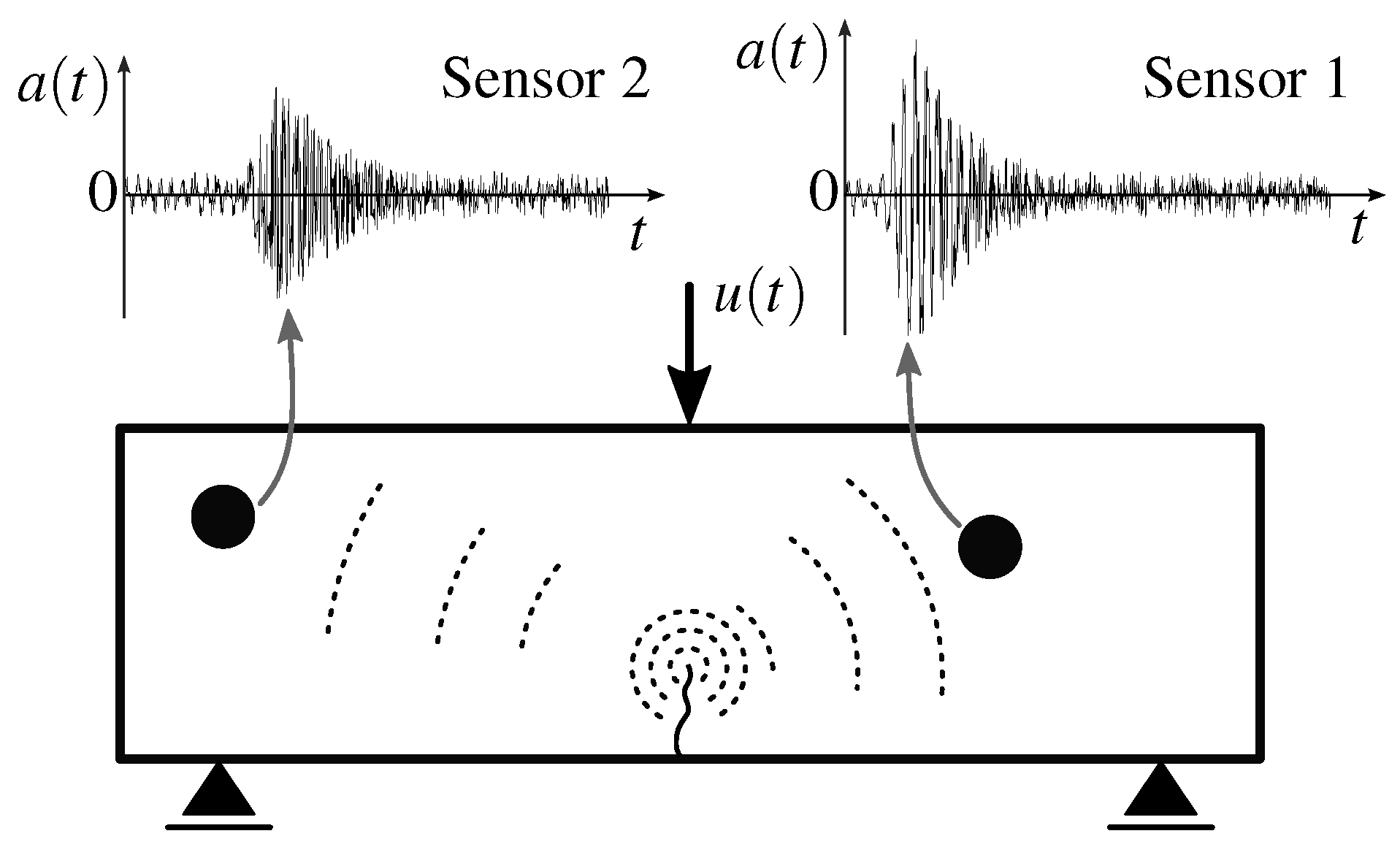
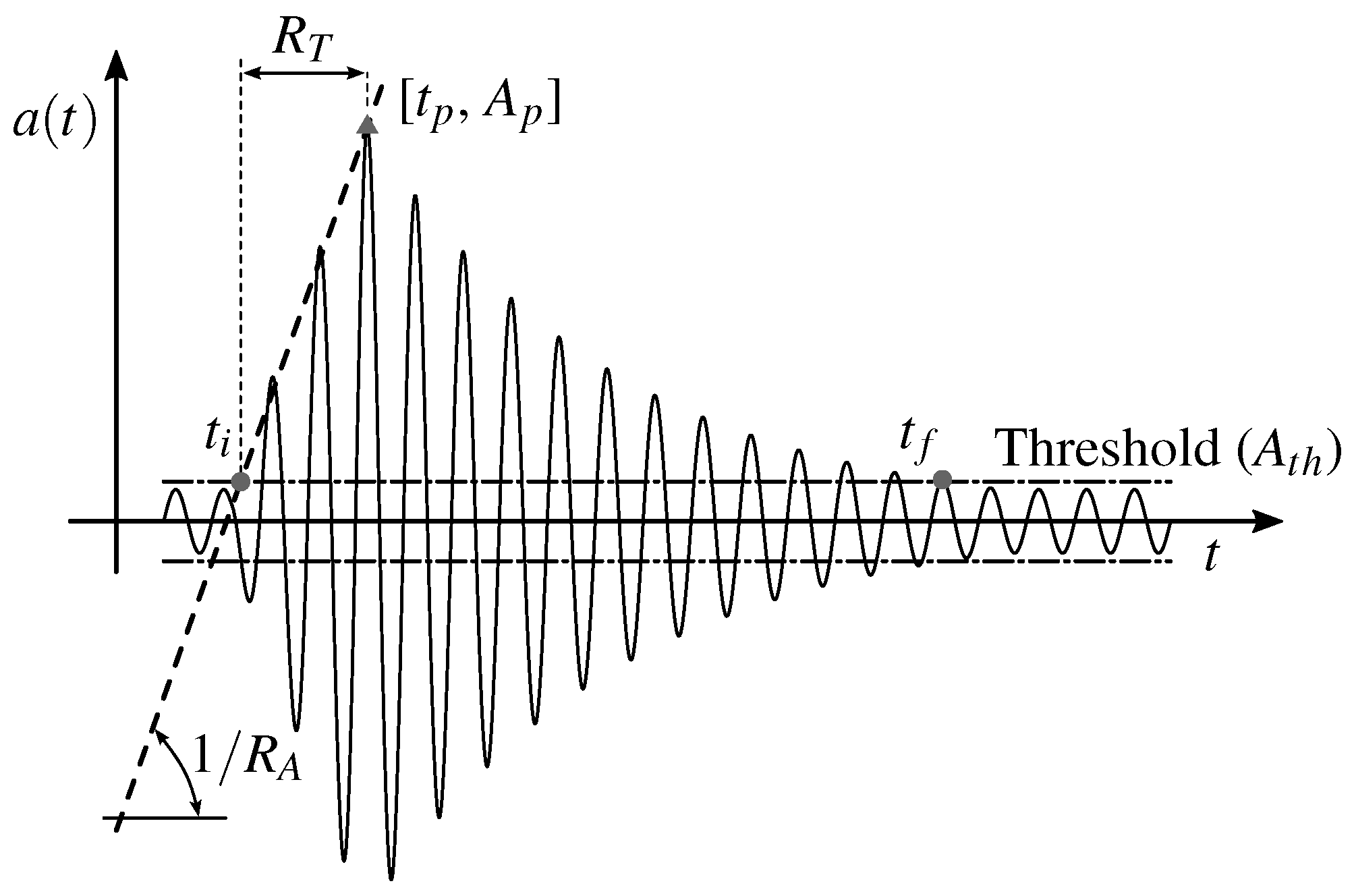
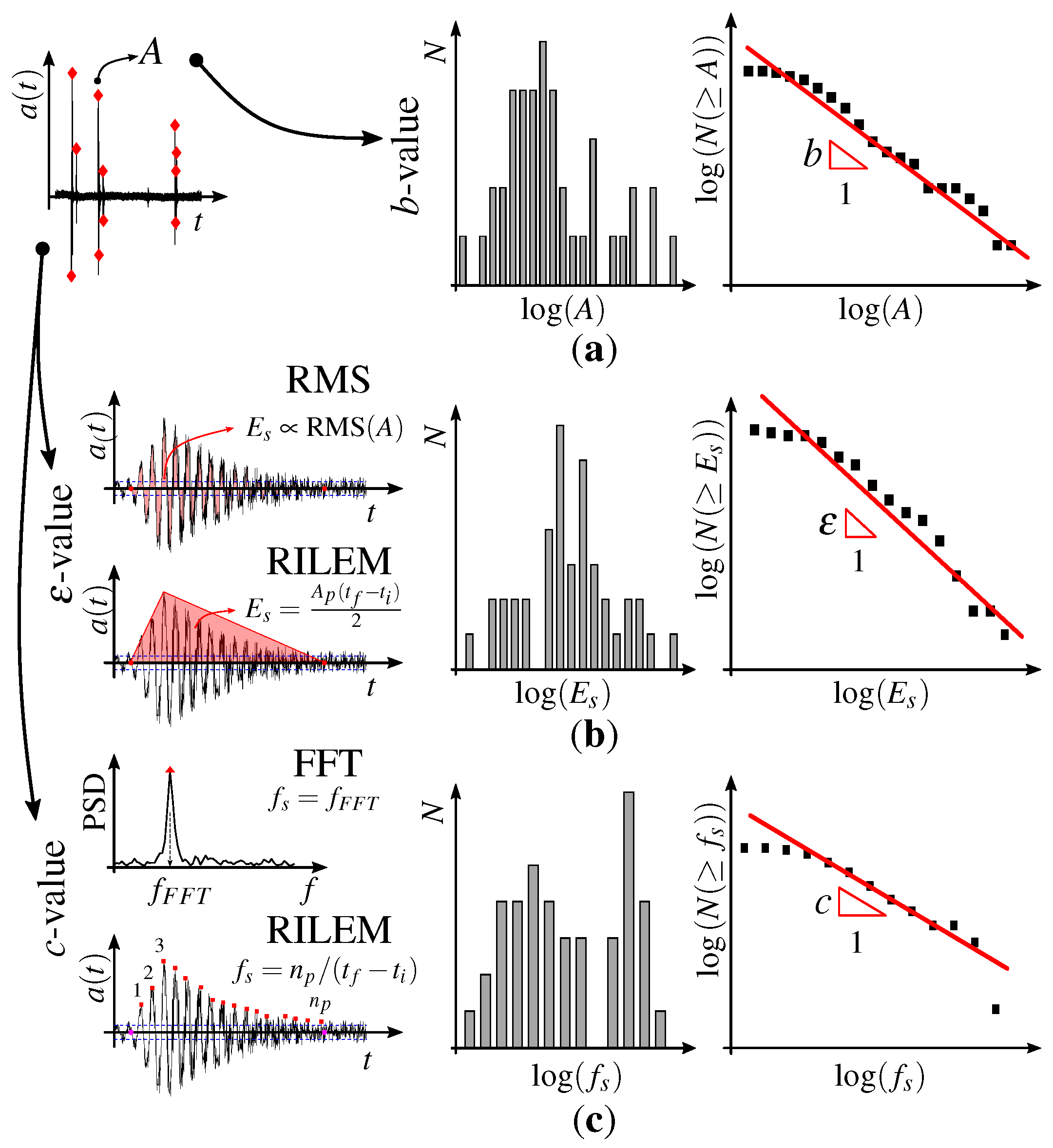


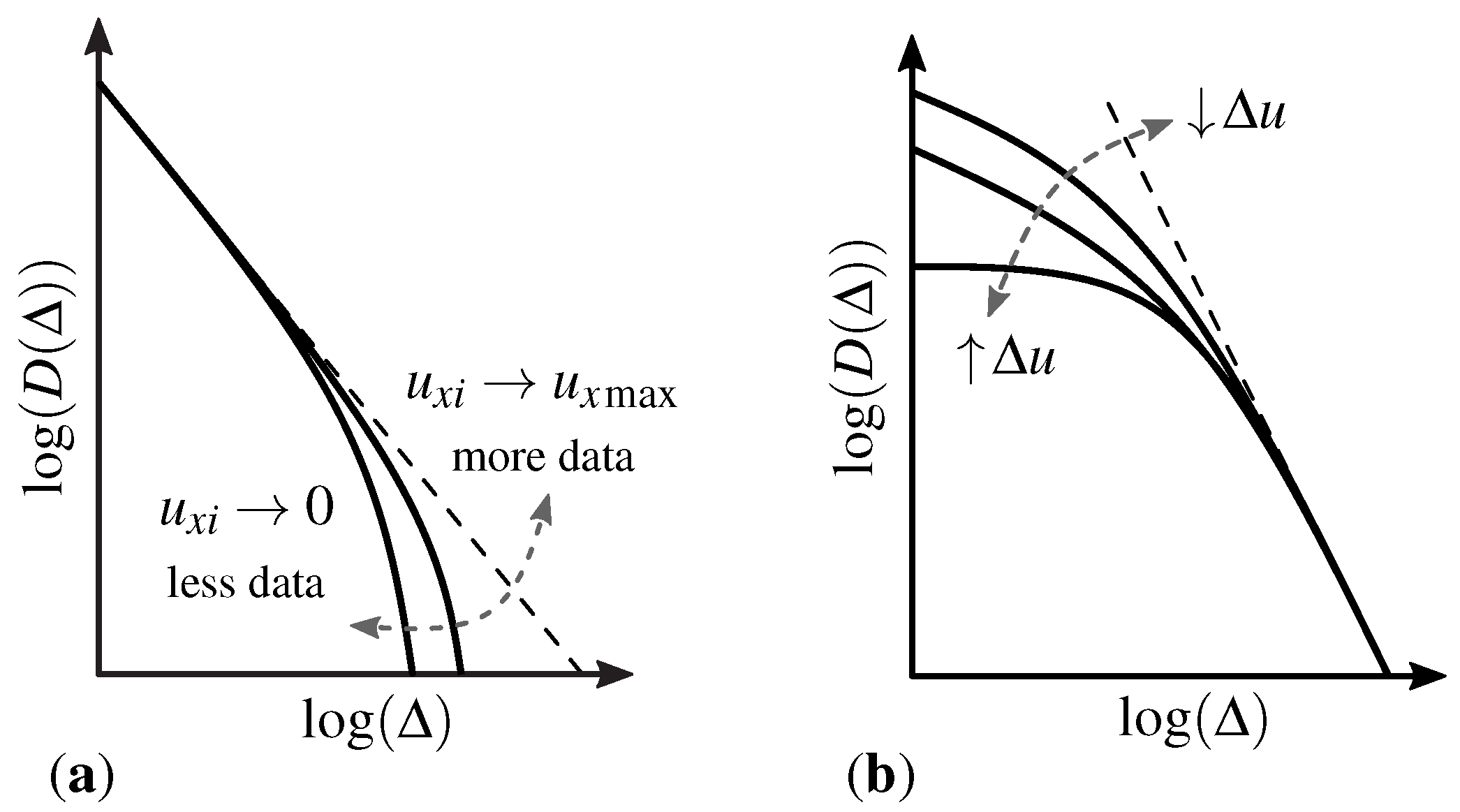
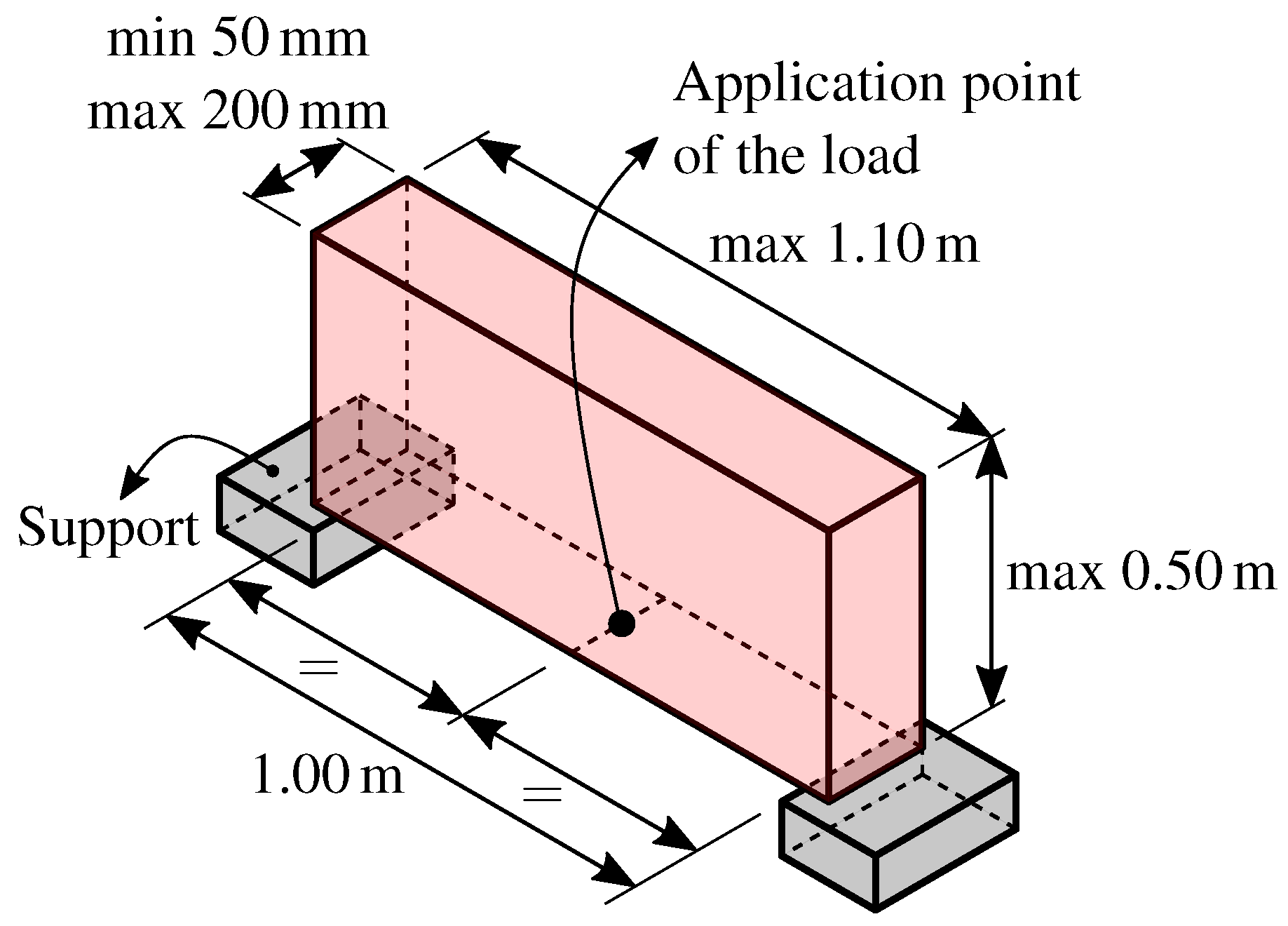

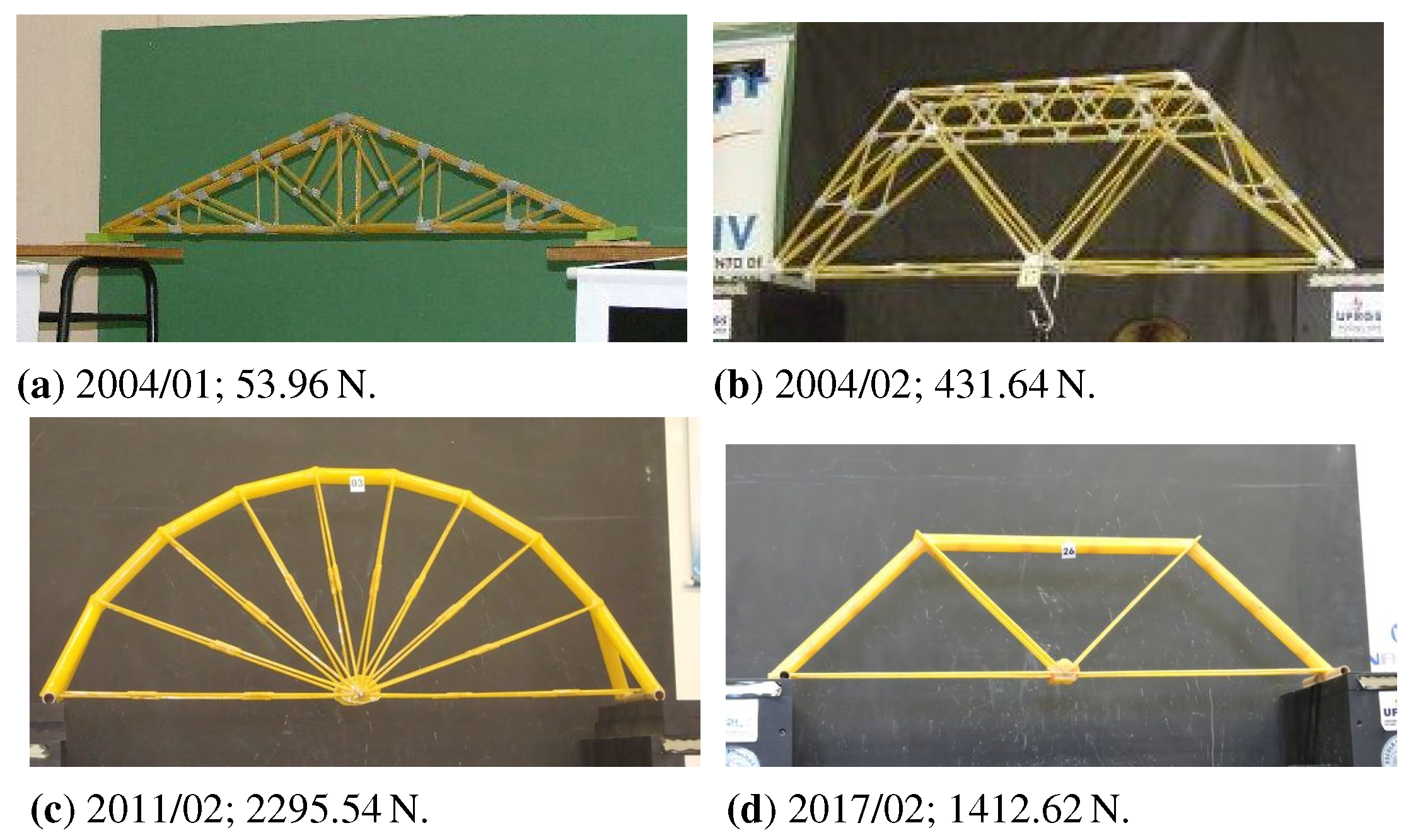
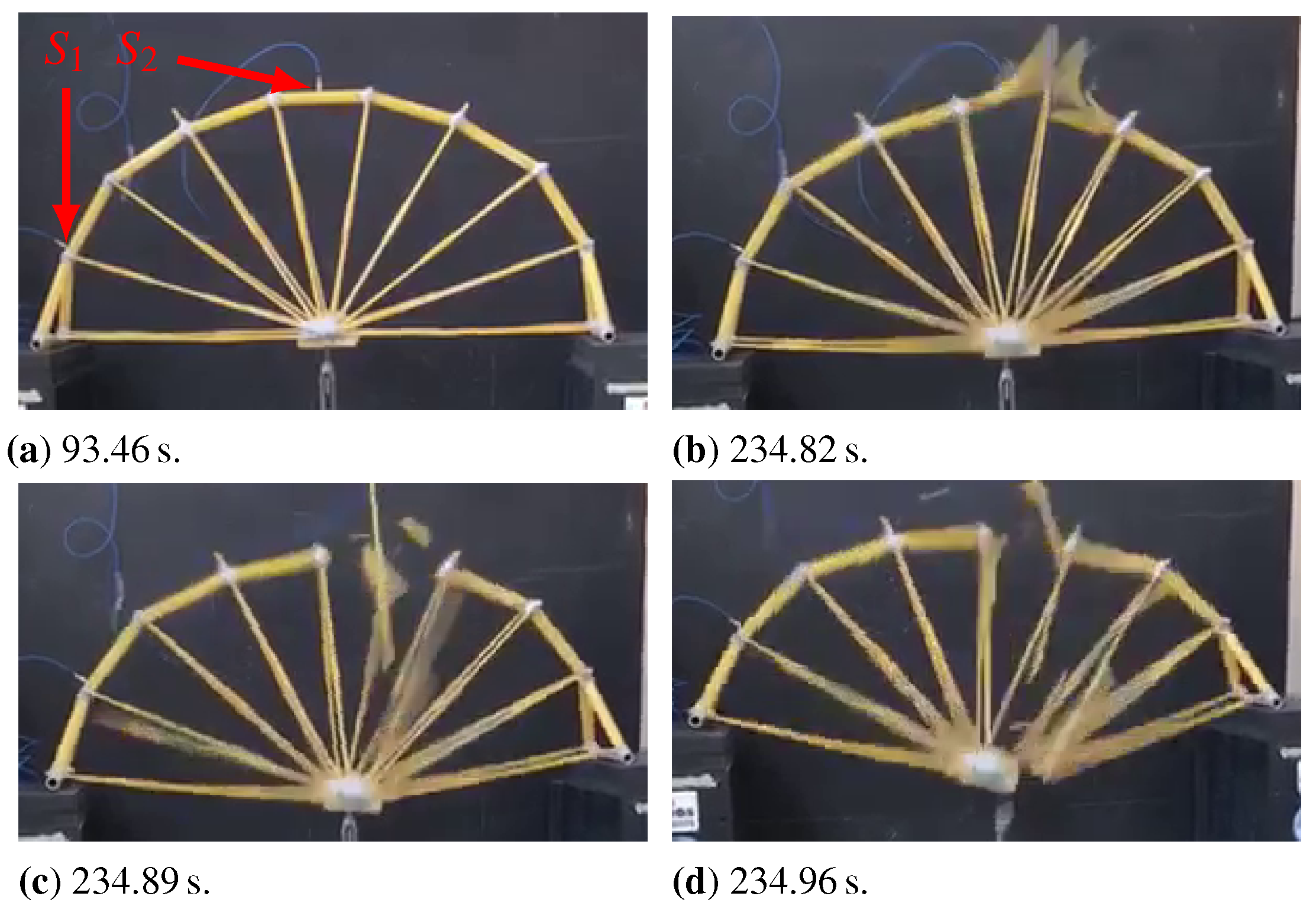

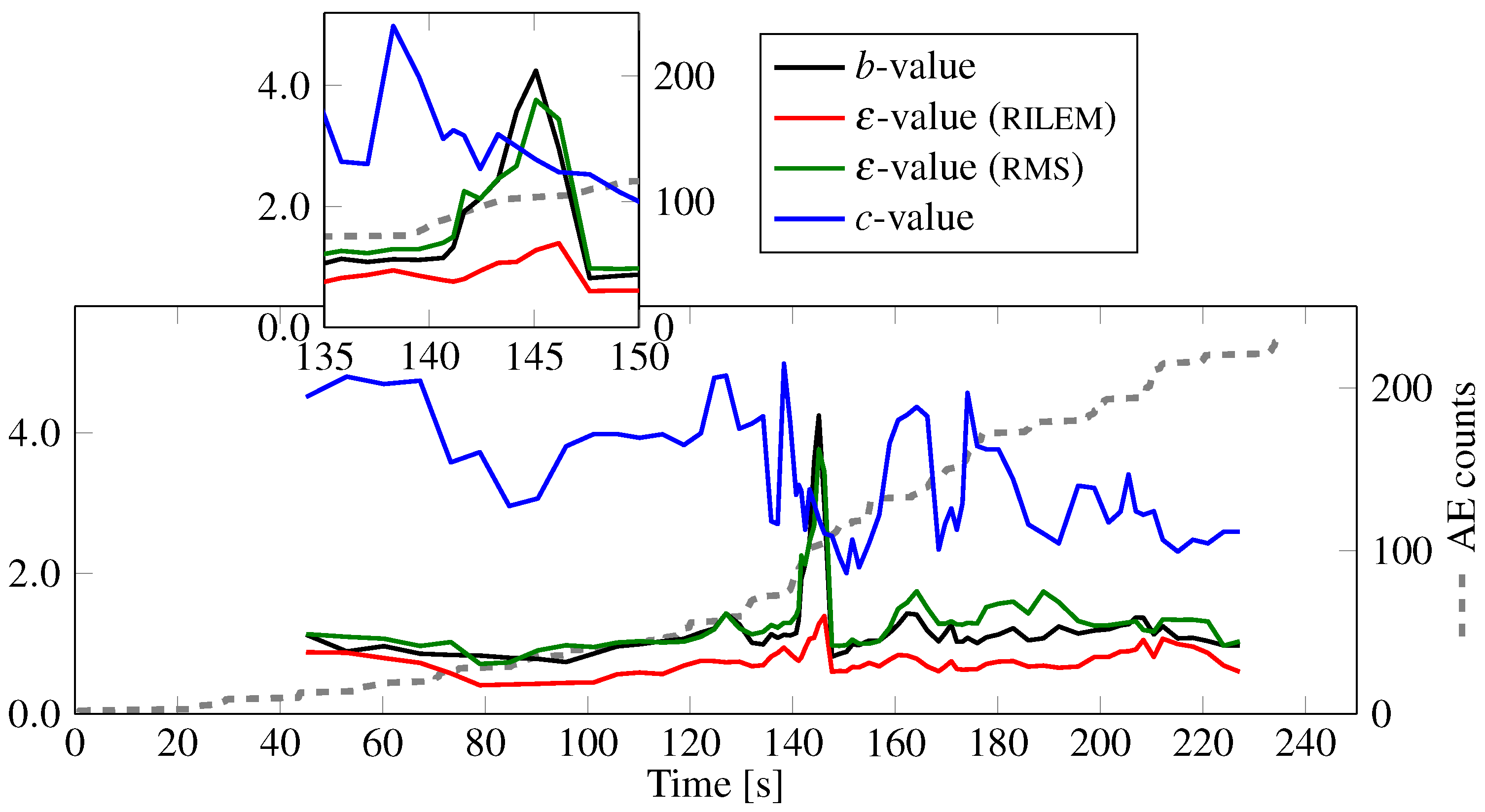
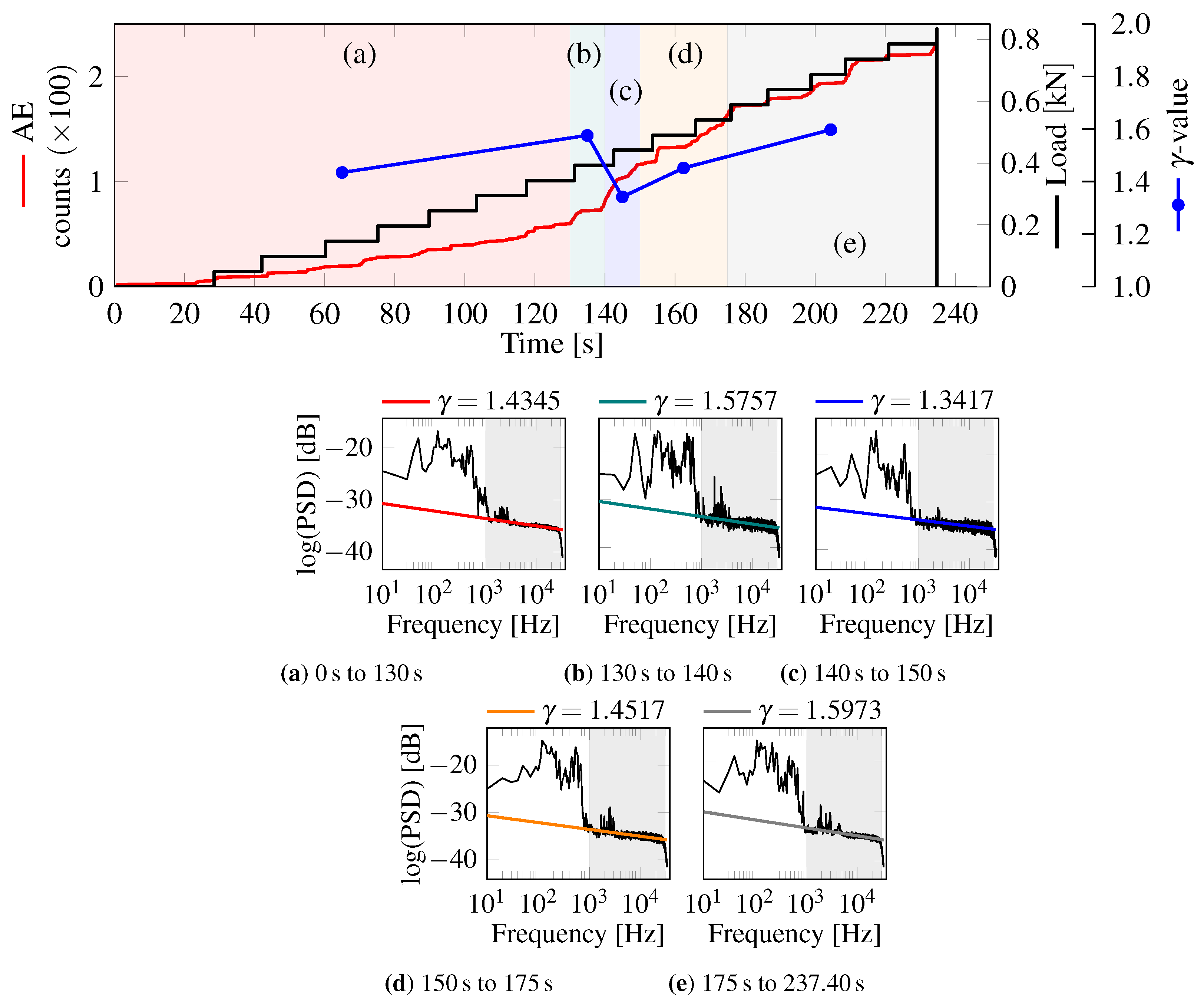
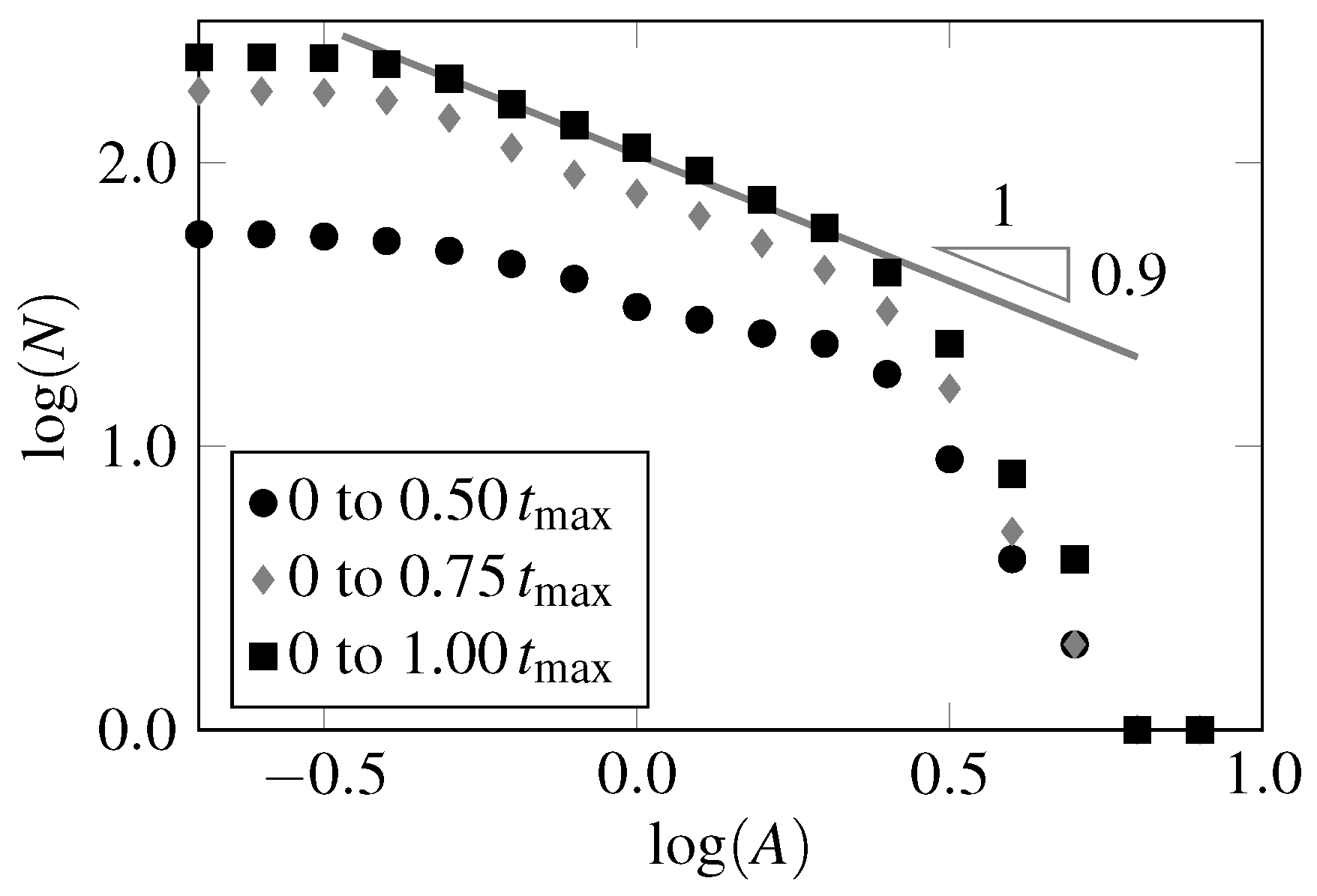
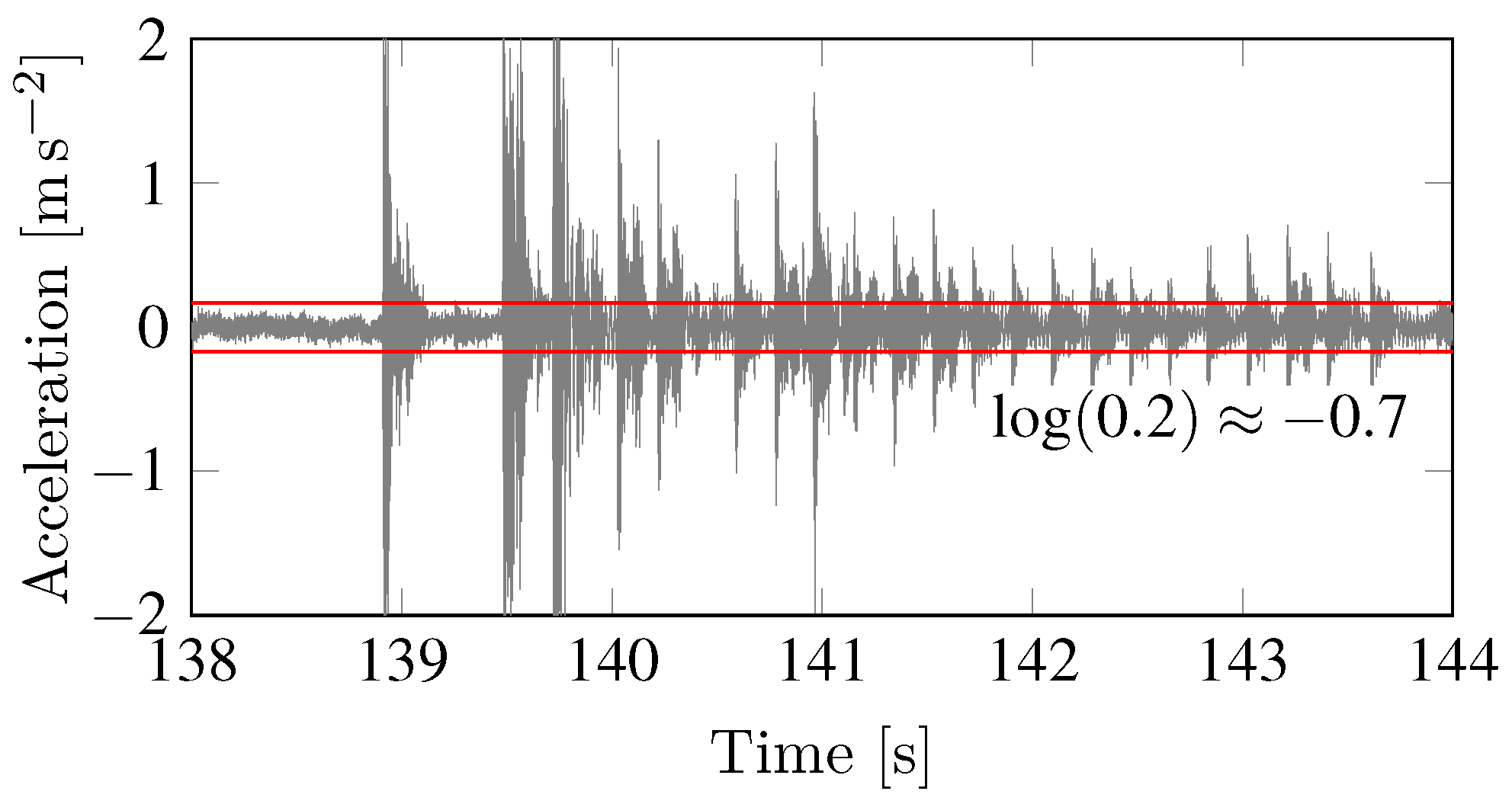
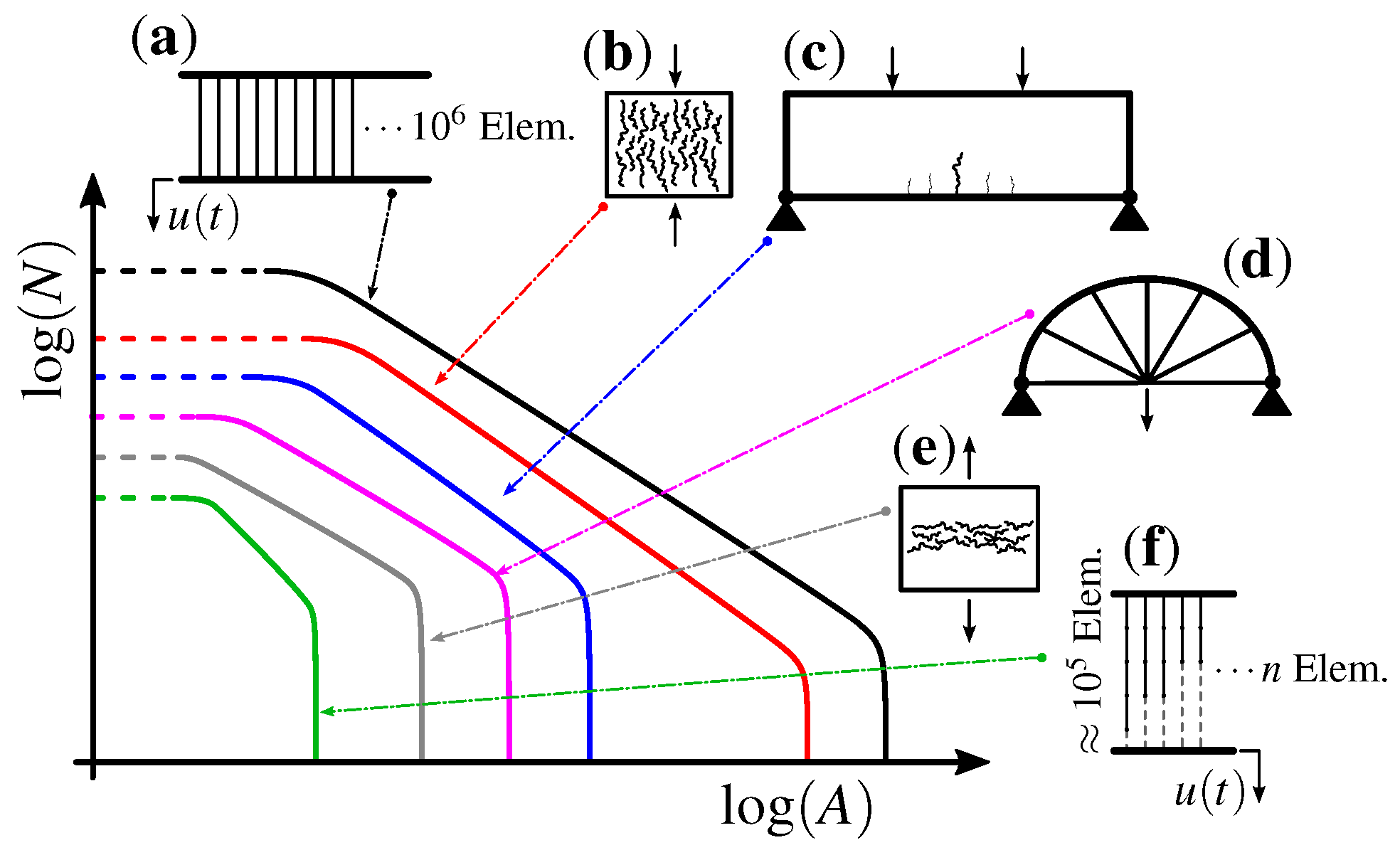

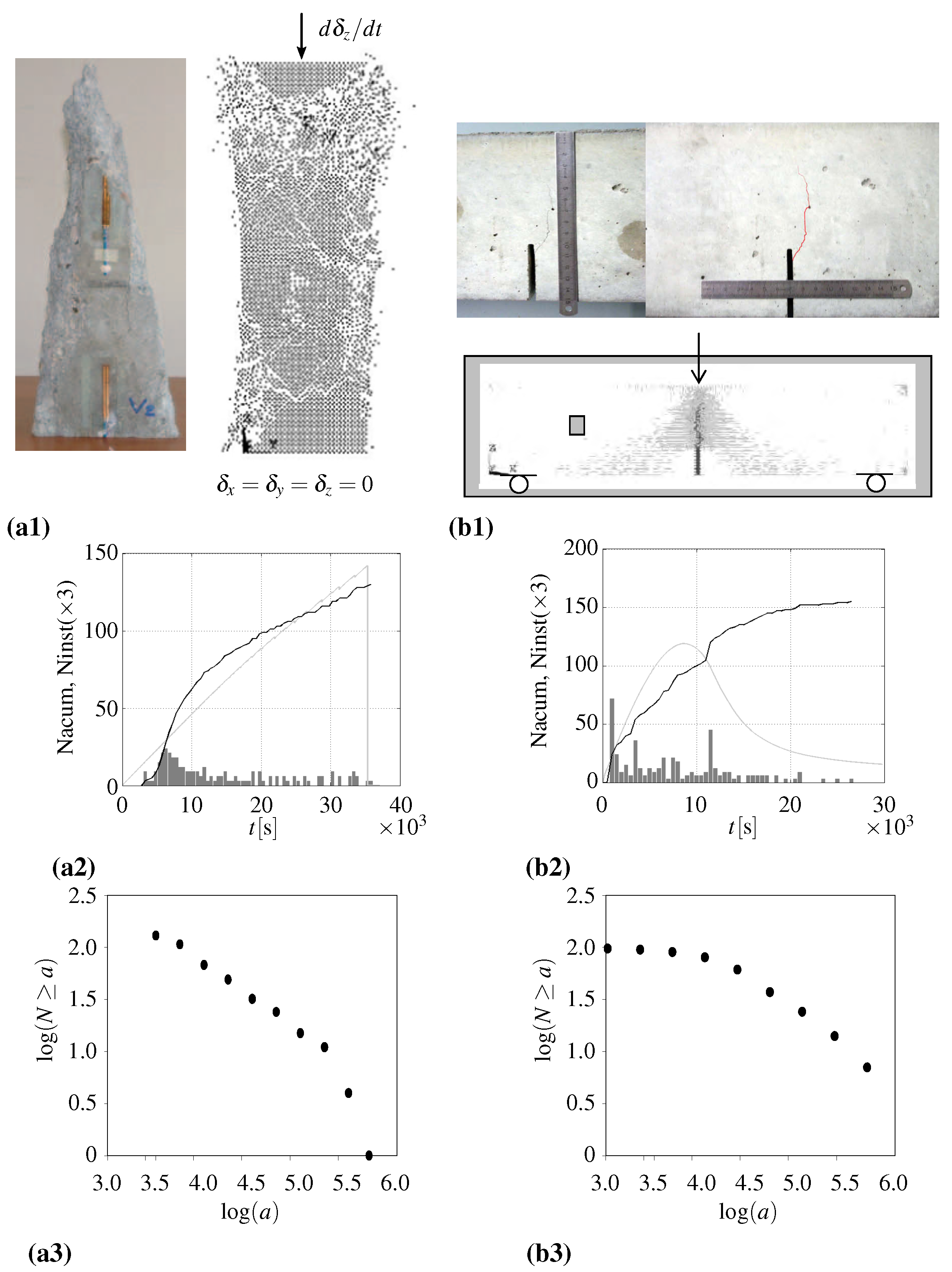
Publisher’s Note: MDPI stays neutral with regard to jurisdictional claims in published maps and institutional affiliations. |
© 2021 by the authors. Licensee MDPI, Basel, Switzerland. This article is an open access article distributed under the terms and conditions of the Creative Commons Attribution (CC BY) license (http://creativecommons.org/licenses/by/4.0/).
Share and Cite
Rojo Tanzi, B.N.; Sobczyk, M.; Becker, T.; Segovia González, L.A.; Vantadori, S.; Iturrioz, I.; Lacidogna, G. Damage Evolution Analysis in a “Spaghetti” Bridge Model Using the Acoustic Emission Technique. Appl. Sci. 2021, 11, 2718. https://doi.org/10.3390/app11062718
Rojo Tanzi BN, Sobczyk M, Becker T, Segovia González LA, Vantadori S, Iturrioz I, Lacidogna G. Damage Evolution Analysis in a “Spaghetti” Bridge Model Using the Acoustic Emission Technique. Applied Sciences. 2021; 11(6):2718. https://doi.org/10.3390/app11062718
Chicago/Turabian StyleRojo Tanzi, Boris Nahuel, Mario Sobczyk, Tiago Becker, Luis Alberto Segovia González, Sabrina Vantadori, Ignacio Iturrioz, and Giuseppe Lacidogna. 2021. "Damage Evolution Analysis in a “Spaghetti” Bridge Model Using the Acoustic Emission Technique" Applied Sciences 11, no. 6: 2718. https://doi.org/10.3390/app11062718
APA StyleRojo Tanzi, B. N., Sobczyk, M., Becker, T., Segovia González, L. A., Vantadori, S., Iturrioz, I., & Lacidogna, G. (2021). Damage Evolution Analysis in a “Spaghetti” Bridge Model Using the Acoustic Emission Technique. Applied Sciences, 11(6), 2718. https://doi.org/10.3390/app11062718







